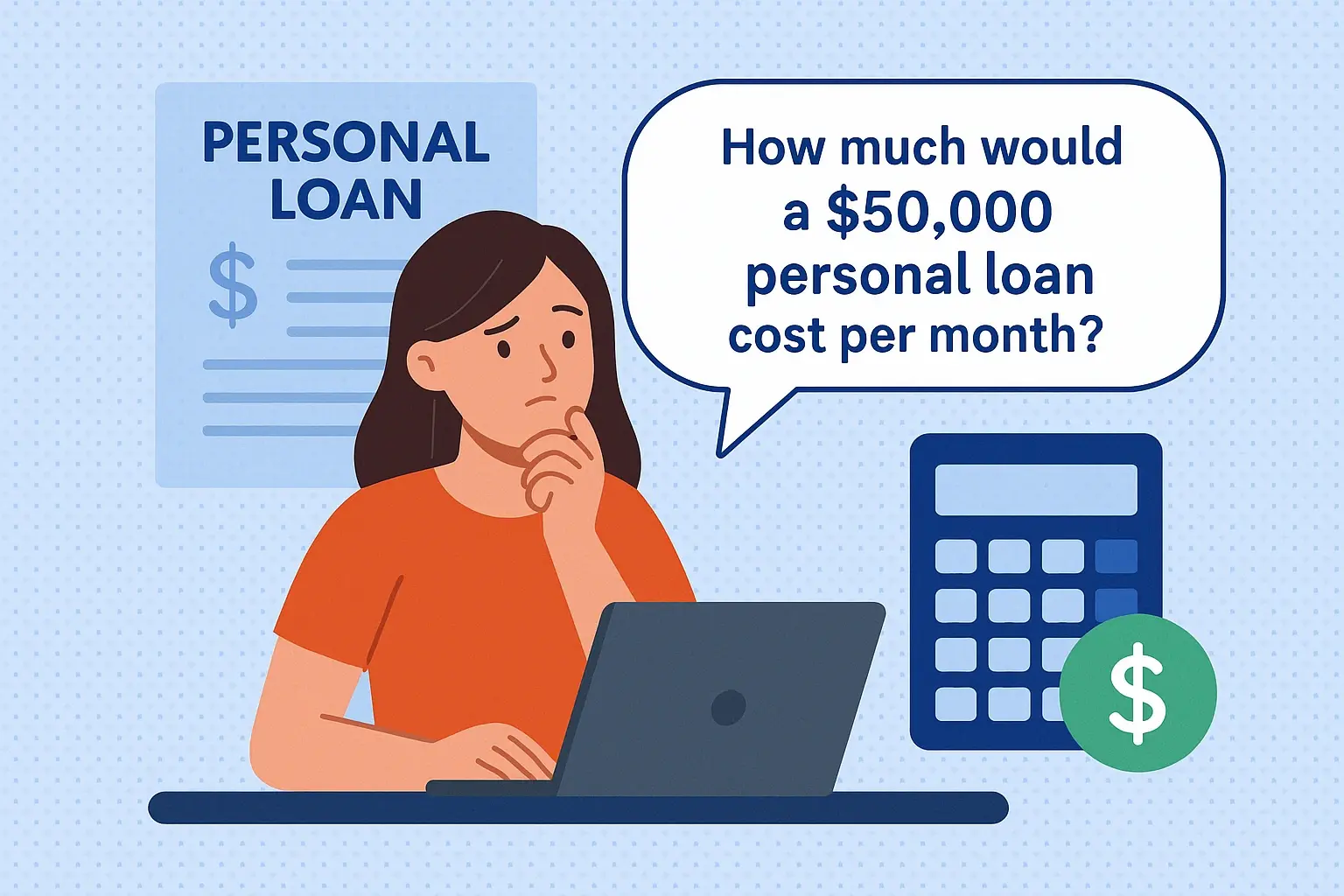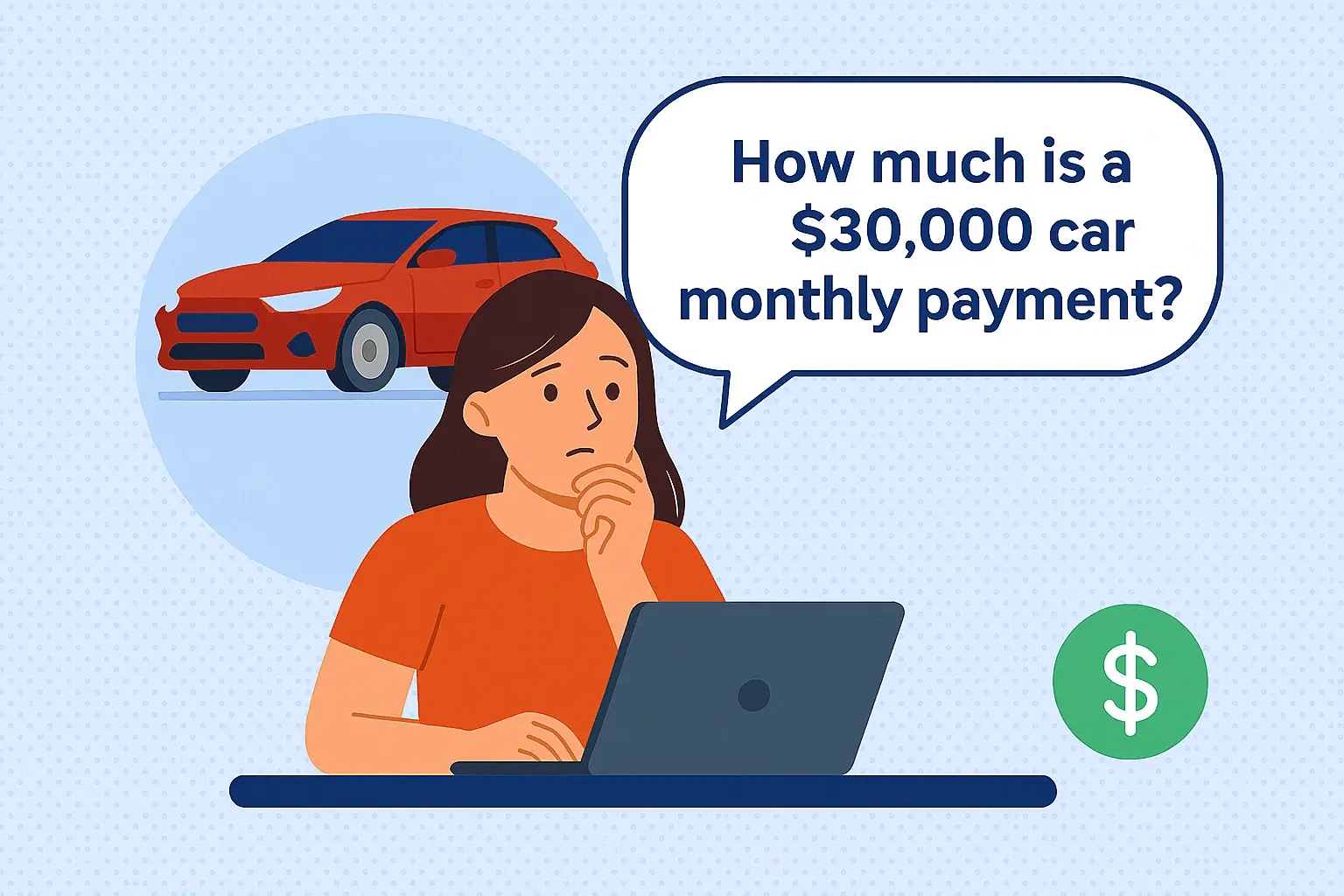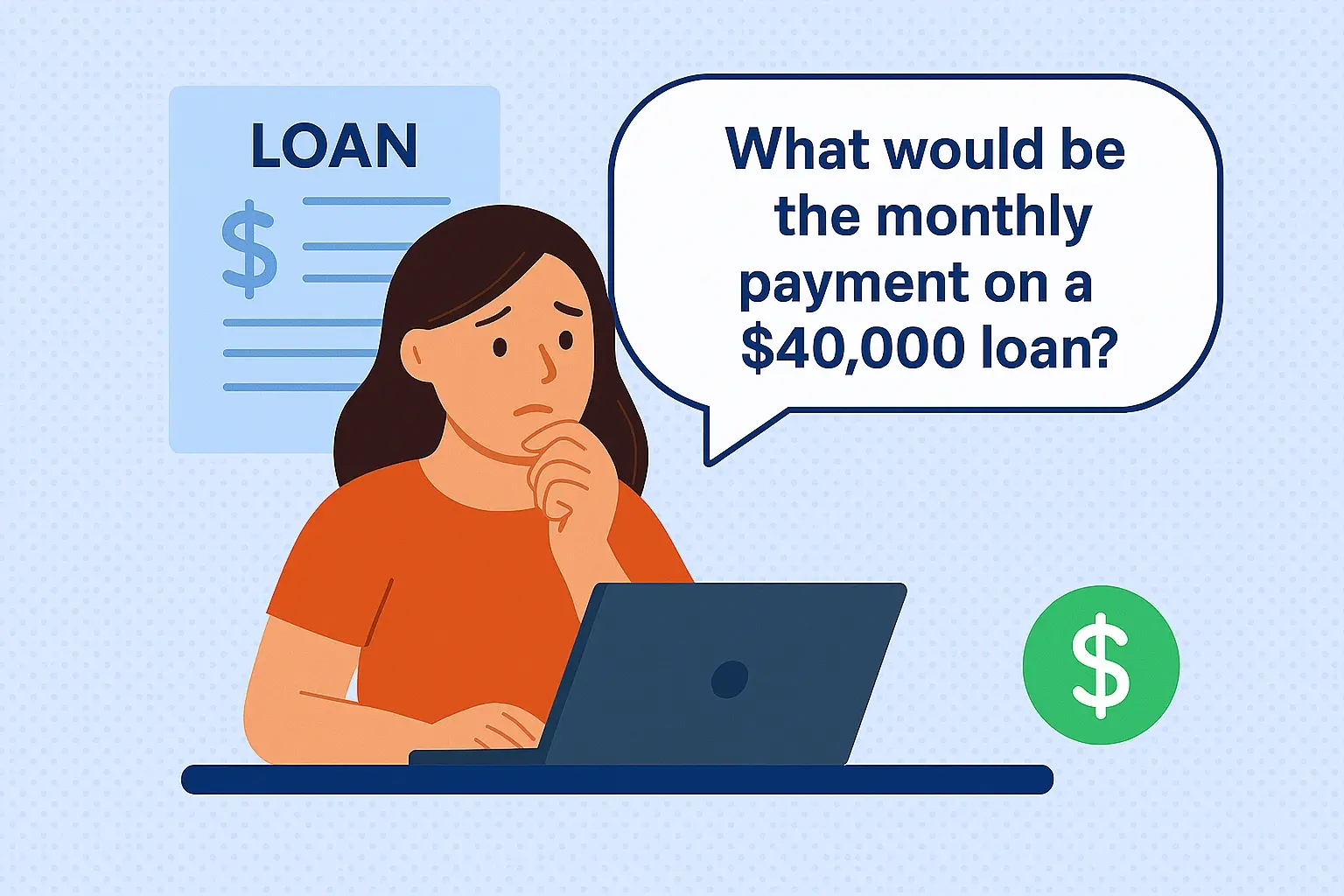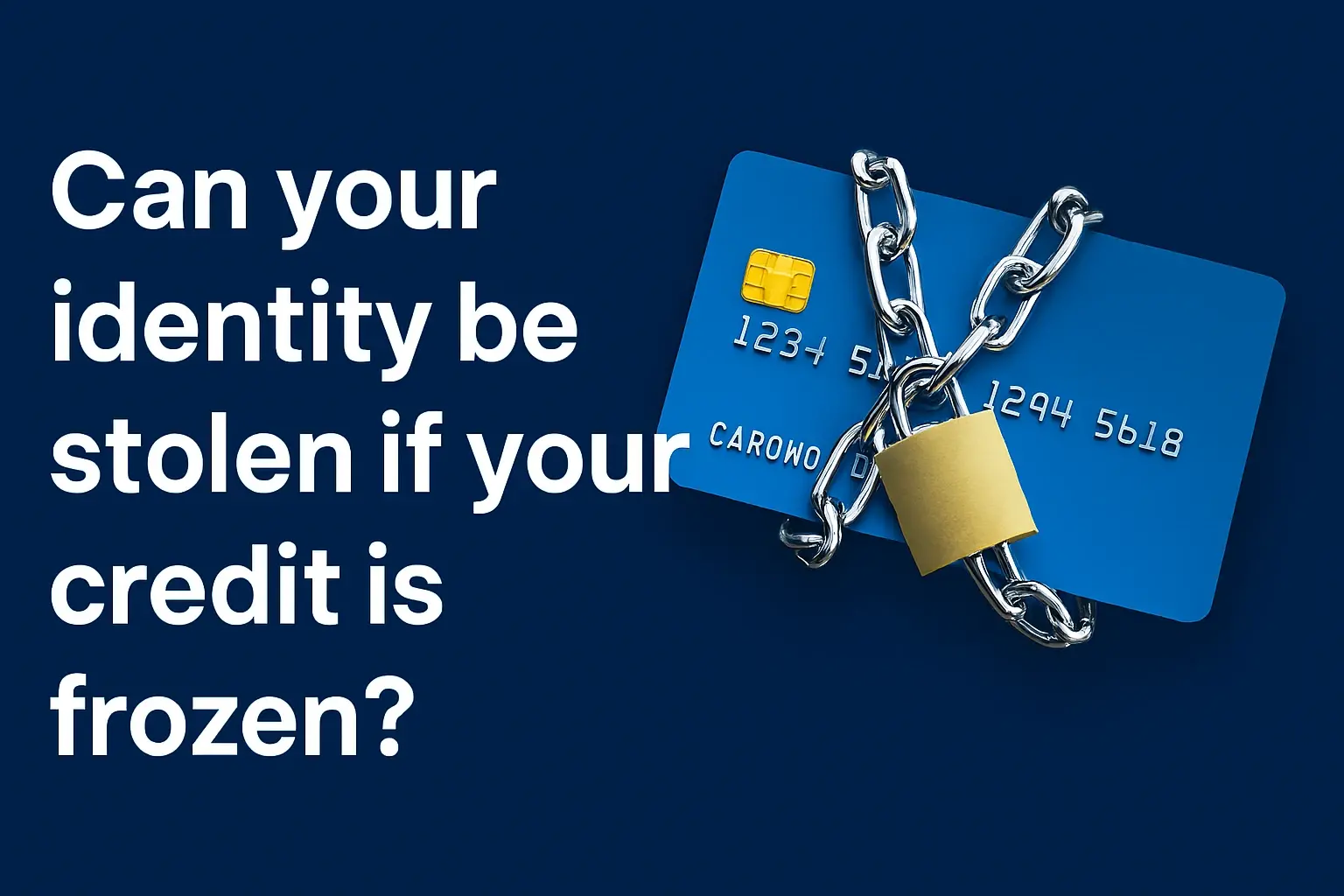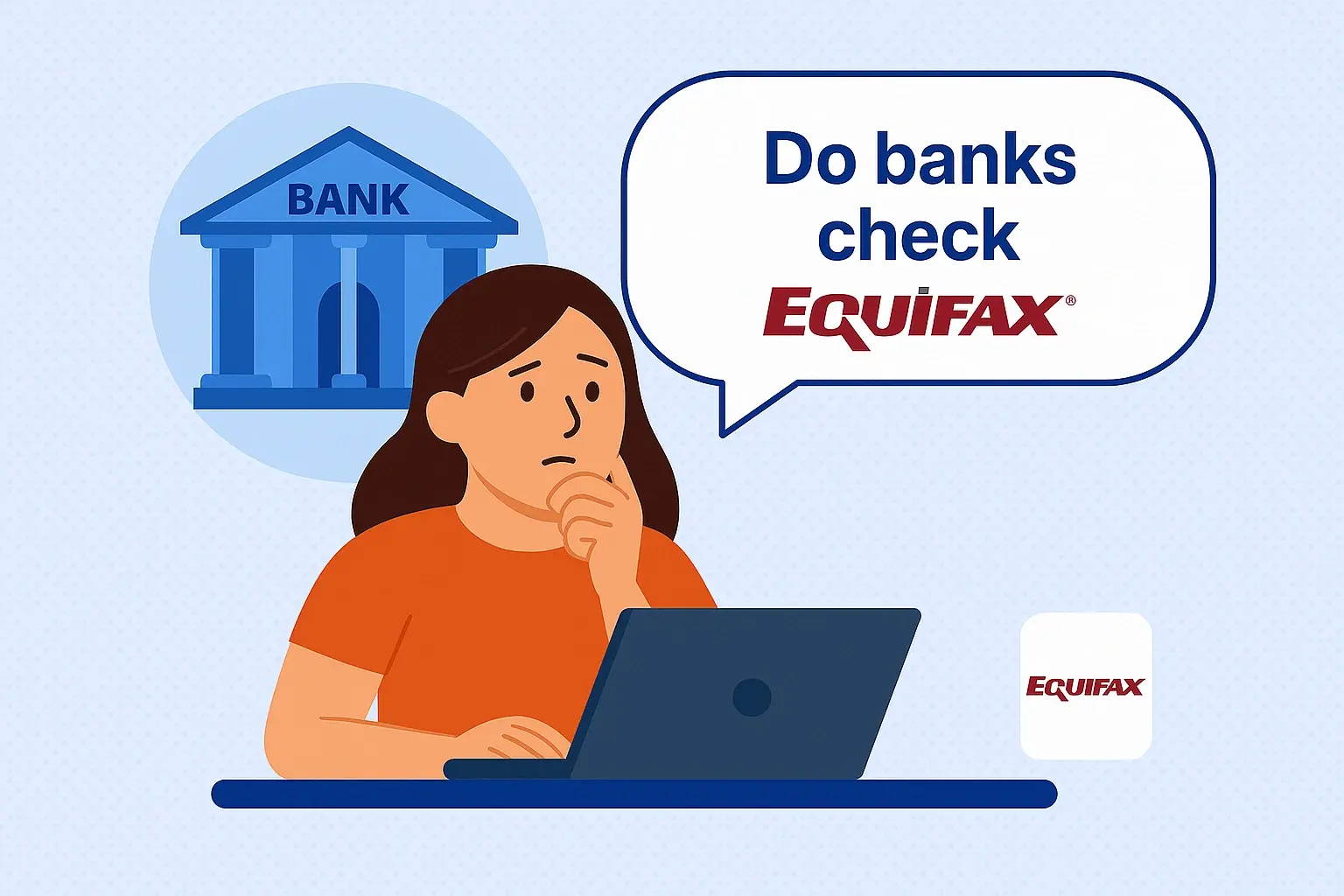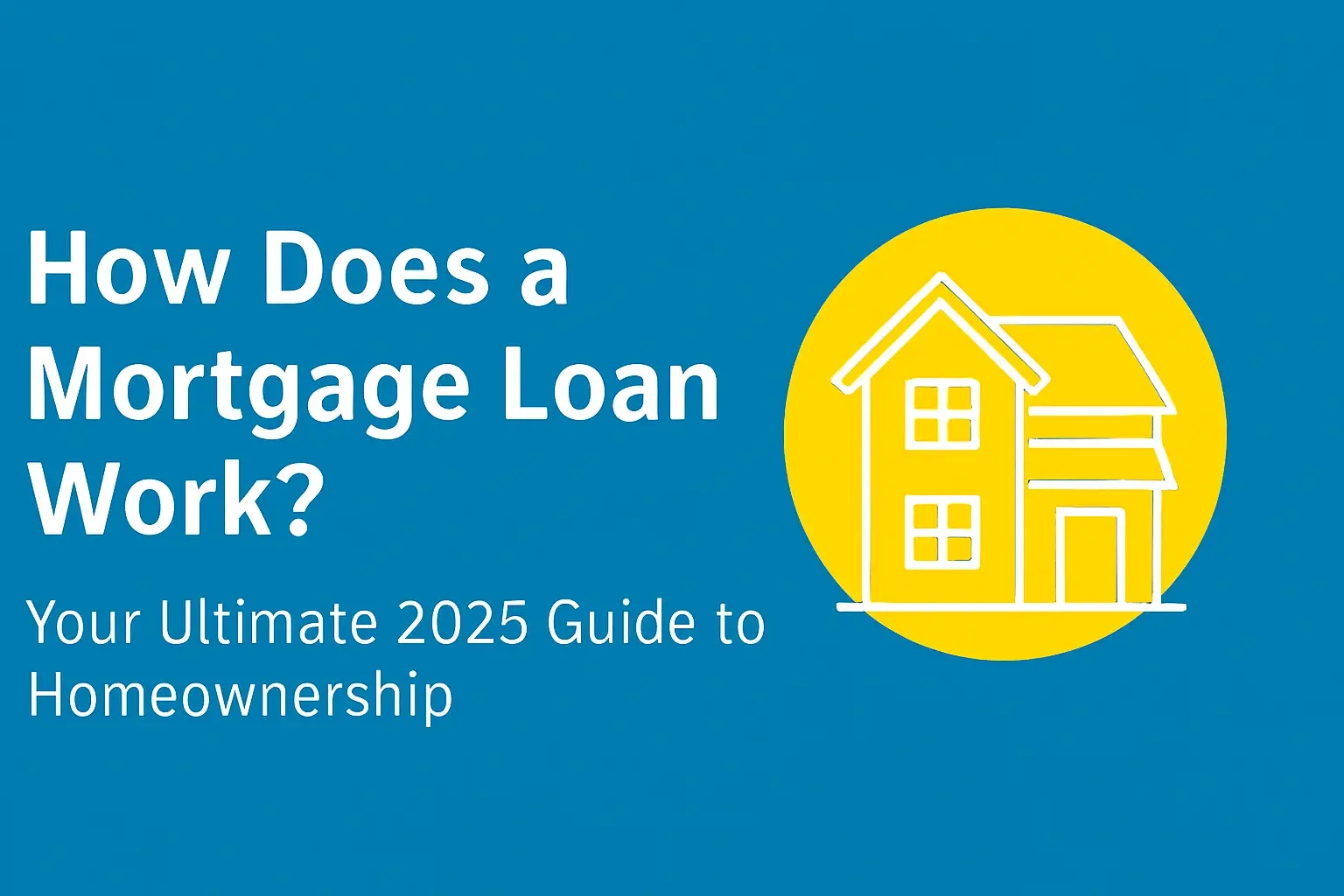-
Posted on: 03 Apr 2023
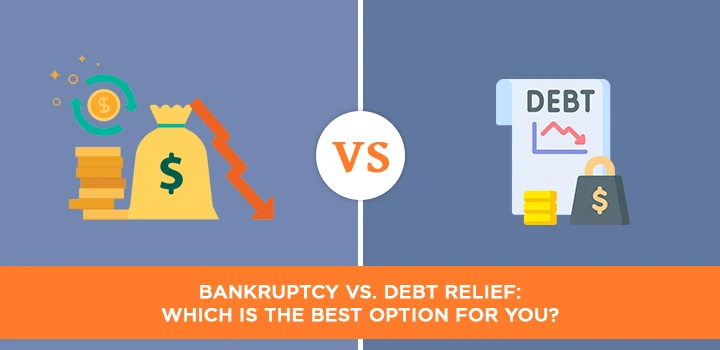
-
Navigating overwhelming debt can feel like an impossible maze. This guide clarifies the crucial differences between bankruptcy and debt relief, empowering you to choose the most effective path toward financial recovery. We'll break down each option, their implications, and help you determine the best fit for your unique situation in 2025.
Understanding Debt Relief Options
When faced with insurmountable debt, individuals often explore two primary avenues: bankruptcy and debt relief. While both aim to alleviate financial burdens, they operate on fundamentally different principles and yield distinct outcomes. Understanding these differences is paramount to making an informed decision that aligns with your long-term financial goals. In 2025, the landscape of debt management offers various solutions, but the choice between a legal restructuring like bankruptcy and a negotiated settlement through debt relief programs requires careful consideration of your unique circumstances, the types of debt you hold, and your desired future financial standing. This comprehensive guide will delve deep into each option, providing the clarity you need to select the best path forward.
What is Bankruptcy?
Bankruptcy is a legal process overseen by federal courts designed to help individuals and businesses who can no longer repay their debts. It offers a structured way to either discharge (eliminate) certain debts or reorganize them into a manageable repayment plan. The primary goal is to provide a fresh financial start. Filing for bankruptcy involves a formal petition to the court, which then dictates the proceedings. It's a powerful tool, but it comes with significant long-term consequences.
The Legal Framework
Bankruptcy law in the United States is primarily governed by federal statutes, specifically Title 11 of the U.S. Code. This legal framework establishes different "chapters" of bankruptcy, each tailored to specific situations. The most common chapters for individuals are Chapter 7 and Chapter 13. A bankruptcy trustee is appointed by the court to administer the case, manage assets, and distribute funds to creditors according to the law.
Key Characteristics of Bankruptcy
- Legal Discharge: The ability to legally eliminate most unsecured debts.
- Court Supervision: The entire process is managed by a federal court.
- Trustee Involvement: A court-appointed trustee oversees the assets and debts.
- Impact on Credit: A significant and long-lasting negative impact on credit scores.
- Public Record: Bankruptcy filings are public records.
- Asset Implications: Depending on the chapter, some assets may be liquidated to pay creditors.
Types of Bankruptcy Explained
For individuals, two primary chapters of bankruptcy are most relevant: Chapter 7 and Chapter 13. Each offers a different approach to debt resolution.
Chapter 7 Bankruptcy (Liquidation)
Chapter 7 is often referred to as "liquidation" bankruptcy. In this process, a trustee is appointed to sell off non-exempt assets (assets that are not protected by law) to pay creditors. Most unsecured debts, such as credit card debt, medical bills, and personal loans, are discharged. However, certain debts, like most student loans, child support, and alimony, are typically not dischargeable. To qualify for Chapter 7, individuals must pass a "means test," which assesses their income against the median income in their state to determine if they have the ability to repay some of their debts.
Eligibility for Chapter 7
- Means Test: Demonstrating that your income is below a certain threshold or that you don't have enough disposable income to repay a significant portion of your debts.
- Credit Counseling: Completing a credit counseling course from an approved agency within 180 days before filing.
- No Prior Filings: Not having had a Chapter 7 or Chapter 13 case dismissed within the past 180 days due to willful failure to appear or comply with court orders, or having had a prior discharge within a certain timeframe.
Assets in Chapter 7
While some assets are protected by federal and state exemptions (e.g., a portion of home equity, a vehicle, retirement accounts), others may be sold. The trustee's goal is to maximize the recovery for creditors.
Chapter 13 Bankruptcy (Reorganization)
Chapter 13 bankruptcy is a reorganization process for individuals with regular income. Instead of liquidating assets, filers propose a repayment plan to pay back a portion of their debts over three to five years. This option is often suitable for individuals who want to keep their assets (like a home or car) but need to catch up on missed payments or restructure their debt payments. The repayment plan is approved by the court, and if successfully completed, remaining eligible debts are discharged.
Eligibility for Chapter 13
- Regular Income: You must have a consistent income stream.
- Debt Limits: Your secured and unsecured debts must be below certain statutory limits (as of 2025, these limits are adjusted periodically). For 2025, the debt limits are approximately $2,750,000 for secured debts and $1,000,000 for unsecured debts.
- Credit Counseling: Similar to Chapter 7, a credit counseling course is required.
The Repayment Plan
The plan outlines how much creditors will receive each month. The amount paid is based on your disposable income and the types of debts you have. Priority debts (like recent taxes or child support) must be paid in full, while unsecured debts may be paid a percentage or nothing at all.
What is Debt Relief?
Debt relief, often referred to as debt settlement or debt management, encompasses a range of services provided by private companies designed to help individuals reduce their unsecured debt. Unlike bankruptcy, debt relief programs are not legal proceedings governed by federal law. Instead, they involve negotiating with creditors on behalf of the debtor to settle debts for less than the full amount owed, or establishing a structured repayment plan with reduced interest rates.
Key Characteristics of Debt Relief
- Negotiation: Primarily relies on negotiation with creditors.
- Private Companies: Offered by for-profit or non-profit organizations.
- No Court Involvement: Generally avoids court proceedings.
- Impact on Credit: Can negatively impact credit, but often less severely than bankruptcy if successful.
- No Public Record: Not a public record.
- Focus on Unsecured Debt: Primarily targets credit cards, medical bills, and personal loans.
Types of Debt Relief Programs
Several types of debt relief programs exist, each with its own methodology for addressing debt.
Debt Management Plans (DMPs)
Often administered by non-profit credit counseling agencies, DMPs involve consolidating your monthly payments into one. The agency negotiates with your creditors to potentially lower interest rates, waive late fees, and establish a manageable monthly payment. You make one payment to the agency, which then distributes it to your creditors. DMPs are typically for individuals who can afford to pay back their debts, but are struggling with high interest rates or multiple payments.
How DMPs Work
- You work with a credit counselor to assess your financial situation.
- The counselor contacts your creditors to negotiate terms.
- You make a single monthly payment to the credit counseling agency.
- The agency distributes payments to your creditors.
Debt Settlement Programs
Debt settlement companies negotiate with your creditors to pay off your debts for a lump sum that is less than the total amount owed. You typically stop paying your creditors and instead make regular payments into a dedicated savings account managed by the settlement company. Once enough money is accumulated, the company uses it to settle individual debts. This method can significantly reduce the amount you owe, but it often involves substantial fees, can severely damage your credit score, and carries the risk that creditors may sue you before a settlement is reached.
How Debt Settlement Works
- You stop making payments to creditors.
- You deposit funds into a dedicated account.
- The company negotiates with creditors to settle debts for less than the full amount.
- Once sufficient funds are available, the company pays the settled debt.
Risks of Debt Settlement
- Credit Damage: Accounts are typically reported as settled for less than full balance, significantly harming credit.
- Fees: Companies charge substantial fees, often a percentage of the debt settled.
- Creditor Lawsuits: Creditors may sue you for non-payment before a settlement is reached.
- Tax Implications: The forgiven debt may be considered taxable income.
Debt Consolidation Loans
This involves taking out a new loan to pay off multiple existing debts. The goal is to simplify payments and potentially secure a lower interest rate. While it doesn't reduce the total amount owed, it can make managing debt more straightforward. If you have good credit, you might qualify for a loan with favorable terms. However, if your credit is poor, you may not qualify or might end up with a loan that doesn't offer significant savings.
Bankruptcy vs. Debt Relief: A Direct Comparison
Choosing between bankruptcy and debt relief is a significant financial decision. The best option depends entirely on your specific circumstances, including the amount and type of debt, your income, your assets, and your long-term financial goals. Understanding the core differences is the first step to making the right choice.
Key Differences at a Glance
Here's a comparative overview to highlight the fundamental distinctions:
Feature Bankruptcy (Chapter 7/13) Debt Relief (Settlement/Management) Legal Standing Federal legal process, court-supervised. Private negotiation, no court involvement. Debt Discharge/Reduction Can discharge most unsecured debts (Chapter 7); reorganizes debts (Chapter 13). Aims to settle debts for less than owed (settlement); reduces interest/fees (management). Impact on Credit Significant negative impact; remains on credit report for 7-10 years. Negative impact, especially with settlement (defaults, settled accounts); management may have less impact if payments are consistent. Asset Protection Some assets protected by exemptions; others may be liquidated (Chapter 7). Generally protects assets as you continue to make payments (though creditors can still sue if you default). Public Record Yes, bankruptcy filings are public. No, not a public record. Eligibility Based on income (means test), debt limits, and credit counseling. Primarily based on willingness to pay and debt amount; credit score can affect options. Cost Court filing fees, attorney fees, credit counseling fees. Company fees (often percentage of debt or settlement amount), potential impact on cash flow. Timeframe Chapter 7 typically 4-6 months; Chapter 13 3-5 years. Settlement can take 2-4 years; management plans typically 3-5 years. Who is Bankruptcy Best For?
Bankruptcy is often the most suitable option for individuals who are:
- Completely Overwhelmed: Facing overwhelming debt that they have no realistic prospect of repaying, even with a structured plan.
- Facing Foreclosure or Repossession: Chapter 13 can help stop foreclosure and allow you to catch up on mortgage payments, saving your home.
- Seeking a Fresh Start: Desiring a legal discharge of debts to rebuild their financial life without the constant pressure of creditors.
- Have Limited Assets: If you have few non-exempt assets, Chapter 7 can allow you to discharge debts with minimal loss of property.
- Facing Lawsuits from Creditors: The automatic stay in bankruptcy immediately halts most collection actions, including lawsuits.
For instance, consider someone like Sarah, a single mother in 2025 with $60,000 in credit card debt and $25,000 in medical bills, earning $45,000 annually. She has a car and a modest savings account. If she has no prospect of significantly increasing her income, Chapter 7 bankruptcy might allow her to discharge these debts, keeping her car and savings under exemption limits, and providing a true fresh start.
Who is Debt Relief Best For?
Debt relief programs are generally more appropriate for individuals who:
- Can Afford to Pay Back Some Debt: They have a stable income and can afford to make payments, albeit with some difficulty.
- Want to Avoid Bankruptcy's Long-Term Impact: They are concerned about the severe credit damage and public record associated with bankruptcy.
- Primarily Have Unsecured Debt: Their debt consists mainly of credit cards, personal loans, and medical bills, where negotiation is more feasible.
- Want to Keep Their Assets: They are not facing immediate foreclosure or repossession and wish to retain their property.
- Prefer a Non-Legal Solution: They are looking for a more private and less formal process.
Consider John, a 2025 graduate with $30,000 in credit card debt and a steady job earning $60,000 annually. He has a good credit score and wants to buy a house in a few years. While he's struggling with high interest rates, he can afford a monthly payment. A Debt Management Plan (DMP) through a reputable credit counseling agency could lower his interest rates, consolidate his payments, and allow him to pay off his debt in about 4-5 years with less damage to his credit than bankruptcy.
Pros and Cons of Each Option
A thorough evaluation of the advantages and disadvantages of each path is crucial.
Bankruptcy: Pros and Cons
Pros:
- Immediate Debt Relief: The automatic stay stops most collection actions immediately upon filing.
- Discharge of Debts: Can legally eliminate significant amounts of unsecured debt.
- Protection of Assets: Exemptions protect certain essential assets.
- Structured Repayment (Chapter 13): Allows for manageable payments over time and can save a home.
- Orderly Process: Provides a clear, court-supervised path to resolution.
Cons:
- Severe Credit Damage: Significantly lowers credit scores and remains on credit reports for 7-10 years.
- Public Record: Bankruptcy filings are public information.
- Asset Liquidation (Chapter 7): May require selling non-exempt assets.
- Restrictions: Limits on filing again and can affect future loans or certain jobs.
- Not All Debts Discharged: Some debts, like most student loans, are not dischargeable.
Debt Relief: Pros and Cons
Pros:
- Potential for Significant Savings: Debt settlement can reduce the total amount owed.
- Avoids Bankruptcy's Public Record: More private than bankruptcy.
- Less Severe Credit Impact (Potentially): If managed well, may have less long-term impact than bankruptcy, especially with DMPs.
- Keeps Assets: Generally allows you to keep your assets.
- Negotiated Solutions: Works with creditors to find resolutions.
Cons:
- Credit Damage: Defaults and settled accounts severely harm credit scores.
- Fees: Debt settlement companies can charge high fees.
- Risk of Lawsuits: Creditors may sue you if you stop paying and before a settlement is reached.
- Tax Implications: Forgiven debt can be taxable income.
- Not Guaranteed: Creditors are not obligated to agree to settlements.
- Requires Discipline: Especially for DMPs, consistent payments are essential.
The Process: What to Expect
Understanding the steps involved in each process can help demystify the journey to financial recovery.
The Bankruptcy Process
The bankruptcy process, while complex, follows a defined structure.
Step 1: Consultation and Decision
Consult with a qualified bankruptcy attorney to understand your options (Chapter 7 vs. Chapter 13) and determine eligibility. You will also need to complete a mandatory credit counseling course from an approved agency.
Step 2: Filing the Petition
Your attorney will prepare and file the necessary paperwork with the federal bankruptcy court. This includes a detailed list of your assets, debts, income, and expenses. Upon filing, an "automatic stay" goes into effect, halting most creditor actions.
Step 3: Trustee Appointment
The court appoints a bankruptcy trustee to oversee your case. For Chapter 7, the trustee reviews your assets for liquidation. For Chapter 13, the trustee reviews your proposed repayment plan.
Step 4: Meeting of Creditors (341 Meeting)
You will attend a brief meeting with the trustee and any creditors who wish to appear. The trustee will ask you questions under oath about your petition and financial situation.
Step 5: Asset Review and Distribution (Chapter 7)
If you filed Chapter 7, the trustee will liquidate non-exempt assets and distribute the proceeds to creditors according to legal priority. If there are no non-exempt assets, it's an "uncontested" or "no-asset" case.
Step 6: Repayment Plan Confirmation (Chapter 13)
If you filed Chapter 13, the court will confirm your repayment plan, and you will begin making payments to the trustee for 3-5 years.
Step 7: Discharge
Upon successful completion of your obligations (liquidation in Chapter 7, or plan payments in Chapter 13), the court grants a discharge, legally releasing you from most of your remaining dischargeable debts.
The Debt Relief Process
Debt relief processes vary slightly depending on the type of program.
For Debt Management Plans (DMPs):
- Consultation: Meet with a certified credit counselor from a non-profit agency to review your finances.
- Negotiation: The agency negotiates with your creditors for lower interest rates, fees, and a consolidated payment.
- Enrollment: You agree to the terms and start making a single monthly payment to the agency.
- Payment Distribution: The agency pays your creditors according to the agreed-upon terms.
- Completion: Once all debts are paid off according to the plan, the program ends.
For Debt Settlement Programs:
- Consultation: Speak with a debt settlement company to assess your eligibility and debt.
- Enrollment: You agree to stop paying creditors and deposit funds into a dedicated account.
- Negotiation: The company negotiates with your creditors to settle debts for less than the full amount.
- Settlement: Once enough funds are available, the company pays the settled amount to the creditor.
- Completion: The program concludes when all enrolled debts are settled or you run out of funds.
Cost Considerations
The financial implications of each option are a critical factor.
Bankruptcy Costs
Bankruptcy involves several costs:
- Filing Fees: The court charges fees to file a bankruptcy petition. As of 2025, these are approximately $338 for Chapter 7 and $313 for Chapter 13, though they can be waived or paid in installments for Chapter 7 if you meet certain income requirements.
- Attorney Fees: This is often the largest expense. Fees vary widely by location and complexity, but can range from $1,500-$3,500+ for Chapter 7 and $3,000-$5,000+ for Chapter 13. Many attorneys offer payment plans.
- Credit Counseling Fees: You must pay for the mandatory credit counseling course, typically $20-$50.
- Asset Liquidation Costs (Chapter 7): If assets are liquidated, there are costs associated with the trustee's actions.
The total cost for Chapter 7 might range from $1,800 to $4,000+, while Chapter 13 can be $4,000 to $7,000+ (often paid through the repayment plan).
Debt Relief Costs
Debt relief costs are structured differently:
- Debt Management Plans (DMPs): Typically involve a small monthly fee, often around $25-$75, paid to the credit counseling agency.
- Debt Settlement Programs: Fees are usually a significant percentage of the debt being settled, often ranging from 25% to 40% of the total debt enrolled. These fees are earned as debts are successfully settled.
- Potential for Additional Fees: Some companies may have setup fees or other charges.
For debt settlement, if you enroll $30,000 in debt and the company charges 30%, their fee would be $9,000, paid out of the money you deposit. This is in addition to the amount paid to creditors.
Impact on Your Credit Score
Both bankruptcy and debt relief will affect your credit score, but the nature and duration of the impact differ.
Bankruptcy's Credit Impact:
- Immediate Drop: Filing for bankruptcy causes a significant, immediate drop in your credit score.
- Long-Term Presence: A Chapter 7 filing remains on your credit report for 10 years from the filing date. A Chapter 13 filing remains for 7 years from the filing date.
- Rebuilding: Rebuilding credit after bankruptcy is possible but takes time and consistent, responsible financial behavior. Lenders may be hesitant to offer credit for several years.
Debt Relief's Credit Impact:
- Debt Management Plans (DMPs): If you make all payments on time, a DMP can have a less severe impact than bankruptcy. Some DMPs are reported as a standard account with a positive payment history once completed. However, the accounts themselves may still show as being on a plan.
- Debt Settlement Programs: This has a very negative impact. The period of non-payment before settlement and the "settled for less than full balance" notation on your credit report will drastically lower your score. This negative information typically remains on your credit report for seven years from the date of the original delinquency.
- Rebuilding: Rebuilding credit after debt settlement can be challenging due to the negative notations.
It's important to note that by 2025, credit scoring models are becoming more sophisticated, but major negative events like bankruptcy or settled accounts still carry significant weight.
Making the Right Choice for Your Financial Future
The decision between bankruptcy and debt relief is deeply personal and depends on a thorough assessment of your financial landscape. There is no one-size-fits-all answer. If you are facing immediate threats like foreclosure, have overwhelming unsecured debt with no clear path to repayment, and are seeking a definitive fresh start, bankruptcy (particularly Chapter 7 if eligible) might be the most effective solution, despite its long-term credit implications. It provides legal protection and a discharge that debt relief cannot match.
Conversely, if you have a stable income, want to avoid the public record and severe credit impact of bankruptcy, and primarily have unsecured debts that you can manage with adjusted terms, debt relief programs like Debt Management Plans could be a better fit. These programs offer a structured way to pay off your debts, often with reduced interest, over a manageable period. Debt settlement should be approached with extreme caution due to its significant risks and credit damage.
The critical first step is to consult with professionals. Speak with a reputable bankruptcy attorney to understand the legal implications and your eligibility for bankruptcy. Simultaneously, consult with a certified credit counselor from a non-profit organization to explore all debt relief options, including DMPs. By gathering comprehensive information and understanding the pros and cons in the context of your unique situation, you can confidently choose the path that leads to sustainable financial health and peace of mind in 2025 and beyond.

